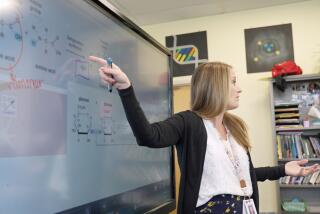Another Way to Think About Reading
For the third time this decade, national examinations reveal that the majority of American students have difficulty in school and may even drop out because they are poor readers. In California, once the finest public school system in the nation, 80% of 8th graders scored at basic or below and only about one in five is a good reader.
The consequences of this staggering educational failure are enormous and frightening. In a highly technical, rapidly changing information age, prospects for poor readers are bleak. No other social problem is more urgent.
We can’t solve the problem, however, until we know what causes it. Unfortunately, we are confused and diverted by ignorance, misinformation, ideology and the kamikaze “experts” who insist on prolonging the futile reading wars. A host of policymakers attribute the reading failure to the state’s brief romance with whole language. That kind of nonsense will only make it much harder to define and address the problem.
Despite the curricular frameworks early in this decade and admonitions to teachers to switch from phonics to whole language, there was no such major shift. Whole language is more of a philosophy about how children learn than it is a teaching method. Most people, including teachers, don’t really understand or practice it. Many confuse it with the discredited “whole word” method, which asks kids to memorize words and phrases for later recognition.
In any case, this is not about choosing between phonics and whole language. Both are necessary.
Most of the 8th and 12th graders who did poorly on national reading exams are capable of “reading” words from a page of text, but they do not understand what they read. Illogical as it may sound, readers must bring meaning to the text, not the other way around. A child who has never heard of the words “penguins” and “Antarctica” still may be able to read, “Penguins live in Antarctica,” but won’t know what it means.
Try it yourself in this sentence: “Several experiments on Josephson junction oscillators have revealed a striking noise-rise phenomenon that cannot be accounted for in terms of thermal fluctuations.” To understand content, you need the vocabulary and information that transform this into knowledge and reasoning ability. That is what whole language is all about.
There are three main reasons--all more prevalent in California--why so many American children do not learn to read well.
First, an increasing number of children enter school without having been exposed to books, stories or content-rich conversations. Mostly poor, these children often come from homes headed by a single mother who herself is uneducated and a poor reader. Many of them are immigrants who speak little or no English. These children may show up at school not knowing their last name or what an ocean is or the color of pineapple. Much of what they encounter in school is alien to them. The words they read are often no more meaningful than “twas brillig and the slithy toves did gyre and gimble in the wabes” of Lewis Carroll’s “Jabberwocky.”
Second, about a fifth of children suffer from dyslexia, often genetically caused. These children require early diagnosis and intervention to be able to read well.
Third, most teachers are taught to teach reading to children who are on the verge of reading; few are prepared to teach disadvantaged children to read. The problem is compounded by the fact that many schools do not have the reading materials, expertise or curriculum to deal with hard-to-teach children.
To solve the reading problem, we must:
* End the obsessive notion that phonics is the sole answer to the reading problem. Children need rich content that is interesting and appealing to the eye. Memorizing sounds does not provide that.
* Increase the number of reading specialists and provide them with financial incentives to teach the neediest children.
* Do a better job of training teachers to work with disadvantaged children.
* Concentrate on reading and writing in the first three years of school. The paramount goal should be reading, whether the subject is science or music or arithmetic.
Poor readers already in the pipeline from 5th to 12th grade present a special challenge. These students need individual learning programs based on their own particular interests and levels of knowledge, whether they be basketball, popular music or whatever.
The stakes are high. A local union president put it this way: “If we don’t soon demonstrate we can teach reading in the first four years, the public will padlock the school doors--and they should.”






